 Paolo Soleri's "hyperstructure" in ground-level view. The figure to the right is the Empire State Building at the same scale.
Paolo Soleri's "hyperstructure" in ground-level view. The figure to the right is the Empire State Building at the same scale.
Definition
Hyperstructure
Crypto protocols that can run for free and forever, without maintenance, interruption or intermediaries.
Blockchains have led to the emergence of a new type of infrastructure called “Hyperstructures”.
Hyperstructures take the form of protocols that run on blockchains. Something can be considered a hyperstructure if it is:
- Unstoppable: the protocol cannot be stopped by anyone. It runs for as long as the underlying blockchain exists.
- Free: there is a 0% protocol wide fee and runs exactly at gas cost.
- Valuable: accrues value which is accessible and exitable by the owners.
- Expansive: there are built-in incentives for participants in the protocol.
- Permissionless: universally accessible and censorship resistant. Builders and users cannot be deplatformed.
- Positive sum: it creates a win-win environment for participants to utilize the same infrastrastructure.
- Credibly neutral: the protocol is user-agnostic.
It is worth noting that just because an application is protocol-based does not immediately mean it is a Hyperstructure. For example, the Wyvern protocol that’s (amongst others) used by Opensea cannot operate without offchain orders being maintained in a privately operated database. This means that if Opensea or any other platform built on it goes down, the market goes down with it. This is also true of a platform like Coinbase, it facilitates the exchange of cryptocurrencies, but if it goes down their market goes down with it too. A more nuanced example: if you see a completely onchain protocol with the ability for admins to completely upgrade and change the rules of a protocol, then that is not a Hyperstructure, that is also platform. This isn't to say any of these examples are inherently bad, they're just not Hyperstructures.
Hyperstructures are entirely onchain, and are public goods which create a positive-sum ecosystem for any participants. I’ll go into detail about each of the primary characteristics of a Hyperstructure below.
Unstoppable
 Ripple, from Mashin Hero Wataru.
Ripple, from Mashin Hero Wataru.
Traditional infrastructure like power grids and social media platforms require a trusted intermediary to maintain and operate it—without it the infrastructure will degrade and/or stop operating altogether. These operators are organizations, either privately owned or state controlled—and require both profits, labor and/or subsidies to serve their purpose over time.
By nature of running on a blockchain, Hyperstructures can run forever with no ability to stop them. They can continuously function without a maintainer or operator, and they can run for as long as the underlying blockchain is running—which can be at the very least a decade. Hyperstructures are unstoppable, and this is a superpower that we have no good prior example of. You can have a one-time creation cost, and then once deployed it will run exactly as designed and without degradation. There is no further labor or capital required to sustain the Hyperstructure. If the core team or platform built on top of the hyperstructure were to disappear, it would still run exactly as designed and be fully operational for decades. Unstoppability is a net new capability that is possible because of blockchains, and is a capability that I believe changes the economic nature of infrastructure.
If we were to zoom out one level of abstraction we could call the blockchain the trusted trustless (yes you read that right) operator of the Hyperstructure.
Free
 Bjork GIF.
Bjork GIF.
Now that we've established unstoppability as a net new feature, I’ll make my most speculative and contentious proposition: Hyperstructures can be simultaneously free forever to utilize and extremely valuable to own. This is possible because of their unstoppability. There is no cost to maintain and keep the protocol operational forever. Once deployed, it will work exactly as it’s designed with no degradation. For example, if the Uniswap team and website disappeared today the protocol will run in perpetuity. This is something that simply hasn't been possible before.
It is worth stating while the Hyperstructure runs exactly at cost, someone still has to pay the gas cost to operate it at that point in time.
Valuable
A hyperstructure can simultaneously be free to use and also extremely valuable to own and govern. This is a familiar value model that we observe for NFTs: the media can be universally free to consume, yet valuable to own and control as an individual or group.
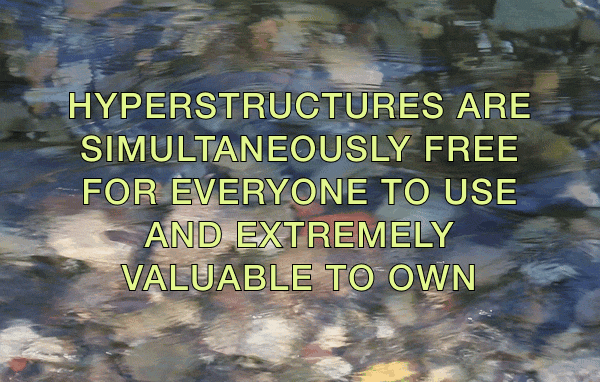 Sampled GIF source unknown, remixed by me.
Sampled GIF source unknown, remixed by me.
But what does ownership mean in this context? The presence (and control) of a fee switch that can be turned on across the protocol. This creates a dynamic called the "threat of the fee". This means that owners of the Hyperstructure have the right to turn that fee on across the protocol at the base level at any time via a vote. It’s the threat of the fee, because it’s long term value-destructive to ever turn it on. Turning the fee on is a value destructive action because it would immediately lead to an incentivized fork, since there’s now a clear reason for new entrants to do it themselves.
This right to destroy is an ownership right, in the same way that owners of an NFT have the right to burn. A rational actor won’t do it, but they can if they want to. In my opinion this right to destroy creates a natural market force to ascribe true value, since people will want to protect that value and utility being offered at large.
The right to sell and transfer the fee switch is also another ownership right. This ability to sell and transfer provides a direct medium for the market to exchange and therefore value it. The DAO could also choose to sell the protocol fee switch to another party—creates a price, and therefore value that can be held.
On top of the right to turn on and receive a protocol fee, other ownership rights can include the right to deploy new versions and governance over a DAO treasury for ecosystem funding and development.
There is a subtle difference between profit and value, and by extension profit extraction and value creation. While it is entirely possible to extract profits in the short term, this is likely in direct conflict with long term success and value creation. I would even go as far as to say that being "for-profit" is a skeuomorphic mode of operation, and leads to a local optima that misses the broader opportunities that come from a diverse platform ecosystem on top of your protocol. The nature of the medium of token ownership and unstoppability means we no longer need to extract profits to realize value creation. We can create "for-public", with a new underlying value system that means the value created in Hyperstructures far exceeds any amount of profits that can be extracted in the immediate term, and can be recognized for the value they provide to society at large.
Expansive fees
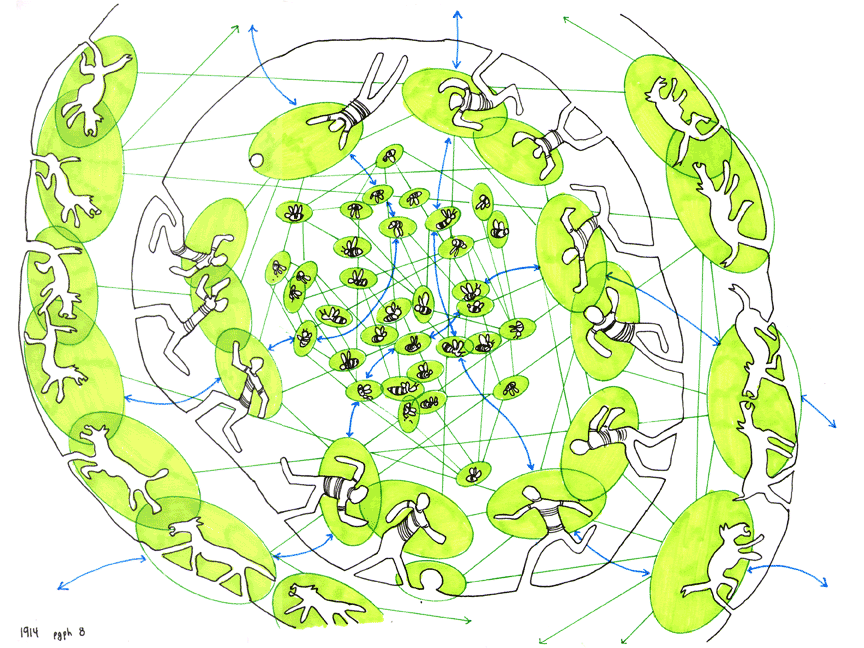 Diagrams for Deleuze & Guattari's A Thousand Plateaus by Marc Ngui.
Diagrams for Deleuze & Guattari's A Thousand Plateaus by Marc Ngui.
Hyperstructures have Expansive Fees—built-in incentives that can be utilized by anyone adding value in a codified manner on top of the protocol. These fees are transparent and available to the entire ecosystem. To effectively earn these fees on top of the hyperstructure, you need to provide the desired value as defined by the protocol. The presence of these incentives provides a mechanism for community expansion of the Hyperstructure, and good mechanism design here is likely critical for longevity.
A great example of an Expansive fee is the Uniswap LP fee. LP fees incentivize participants to provide the key resource—liquidity. This fee is paid to anyone who is providing liquidity to a pool, it is not paid to Uniswap. LP’s expand the utility of Uniswap, they do not have a monopoly on providing that utility and an LP only captures value on what they’re creating.
Another example is the Zora Finder’s Fee, which incentivizes participants to provide a key resource—distribution. This fee is paid to anyone who finds the winning bidder or eventual buyer of an NFT. Finders expand the utility of Zora, and they do not have a monopoly on the NFT markets being displayed, a finder only captures the value they’re creating.
In Hyperstructures, any participant's value captured is synonymous with their value generated. The inverse is also true, if any third party or entity has the ability to freely extract value (without direct value creation) then the system is not a hyperstructure.
Permissionless
The Short But Exciting Lifespan of A Flower Growing on A Highway Median in Shanghai, 2021 by Avery Famous. Minted as an NFT.
Permissionlessness is a guarantee that is unique to crypto protocols deployed on blockchains. Permissionless means that a Hyperstructure:
- Is universally accessible, everyone is able to utilize it completely without prejudice
- Is unable to change its core operating functionality
The implication of being permissionless means that everyone can confidently build their own platforms, applications and economic models on top of the Hyperstructure without the risk of deplatforming. There are no API keys required, and no fear that a platform can suddenly upend your entire project on a whim.
 The Uncensored Library in Minecraft that features inaccessible journalism.
The Uncensored Library in Minecraft that features inaccessible journalism.
Similarly, this offers censorship resistance at the individual level, as there is no arbiter or central entity that can decide to restrict access to the utility of the infrastructure.
Credibly Neutral
 Source unknown.
Source unknown.
As a result of being permissionless and unstoppable, Hyperstructures are credibly neutral.
They are user-agnostic. That is, they do not discriminate for or against any specific people and treat everyone fairly. Hyperstructures are universally accessible for anyone to utilize, build on top of and integrate into their own systems—without any risk of deplatforming or exclusion. Hyperstructures treats every participant fairly, to the extent that it’s possible to treat people fairly in a world where everyone’s capabilities and needs are so different (Buterin, 2020).
Positive-sum
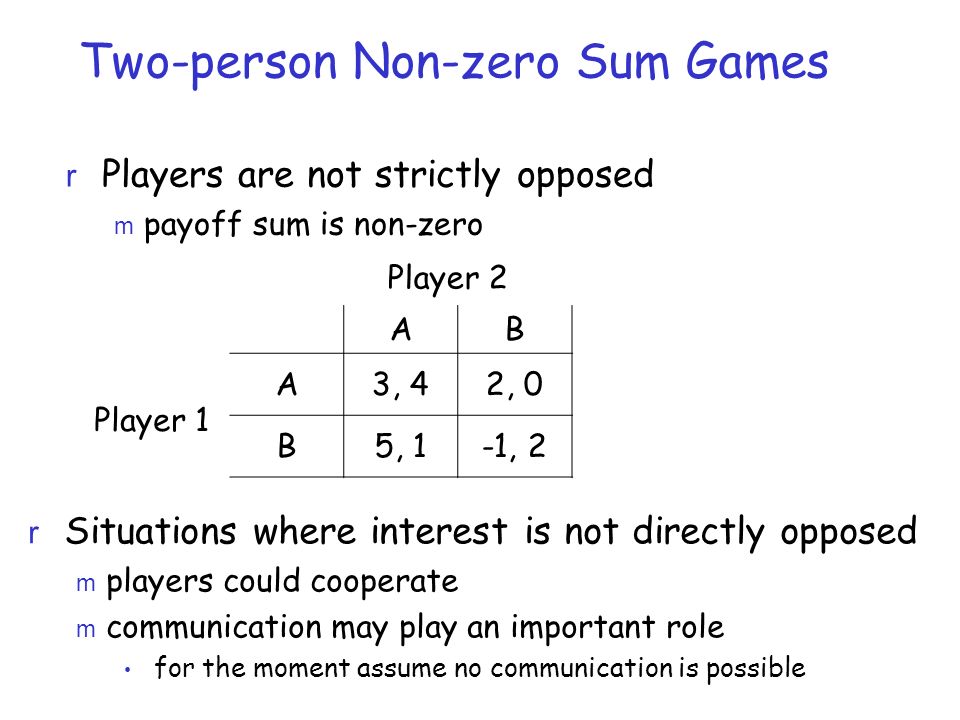 Two-person non zero-sum games by Giovanni Neglia.
Two-person non zero-sum games by Giovanni Neglia.
As a result of being free, expansive, unstoppable, permissionless and credibly neutral—Hyperstructures create a positive sum environment.
By being free forever, there is no incentive for someone to 1-for-1 replicate the same functionality—since there is no additional value capture or risk minimization that comes from doing so. At a societal level, a hyperstructure only needs to be built once. This does not mean there isn’t an incentive to innovate, people will still have the incentive to create an alternative with superior and differentiated functionality. But simply forking with the same utility will not win.
By being expansive with fees, Hyperstructures allow for participants to directly profit from the value that they create for the system without needing to compete with the system itself.
By being unstoppable, there is no operational risk for participants relying on the system to function. They can operate on the system without having to rebuild and operate it themselves.
By being permissionless, all of the above conditions are guaranteed to remain unchanged. Which, once again, removes the need for anyone to rebuild the system themselves—just simply create on top of it and capture the unique value that you provide to the system.
By being credibly neutral, there is no group or community that is excluded, which again means there is no reason to rebuild if the system satisfies your needs.
This means that you can have a rich ecosystem of potentially competitive participants organizing on and utilizing the same piece of infrastructure to the net benefit of everyone through shared liquidity and the network effect of integrations.
Building a Hyperstructure
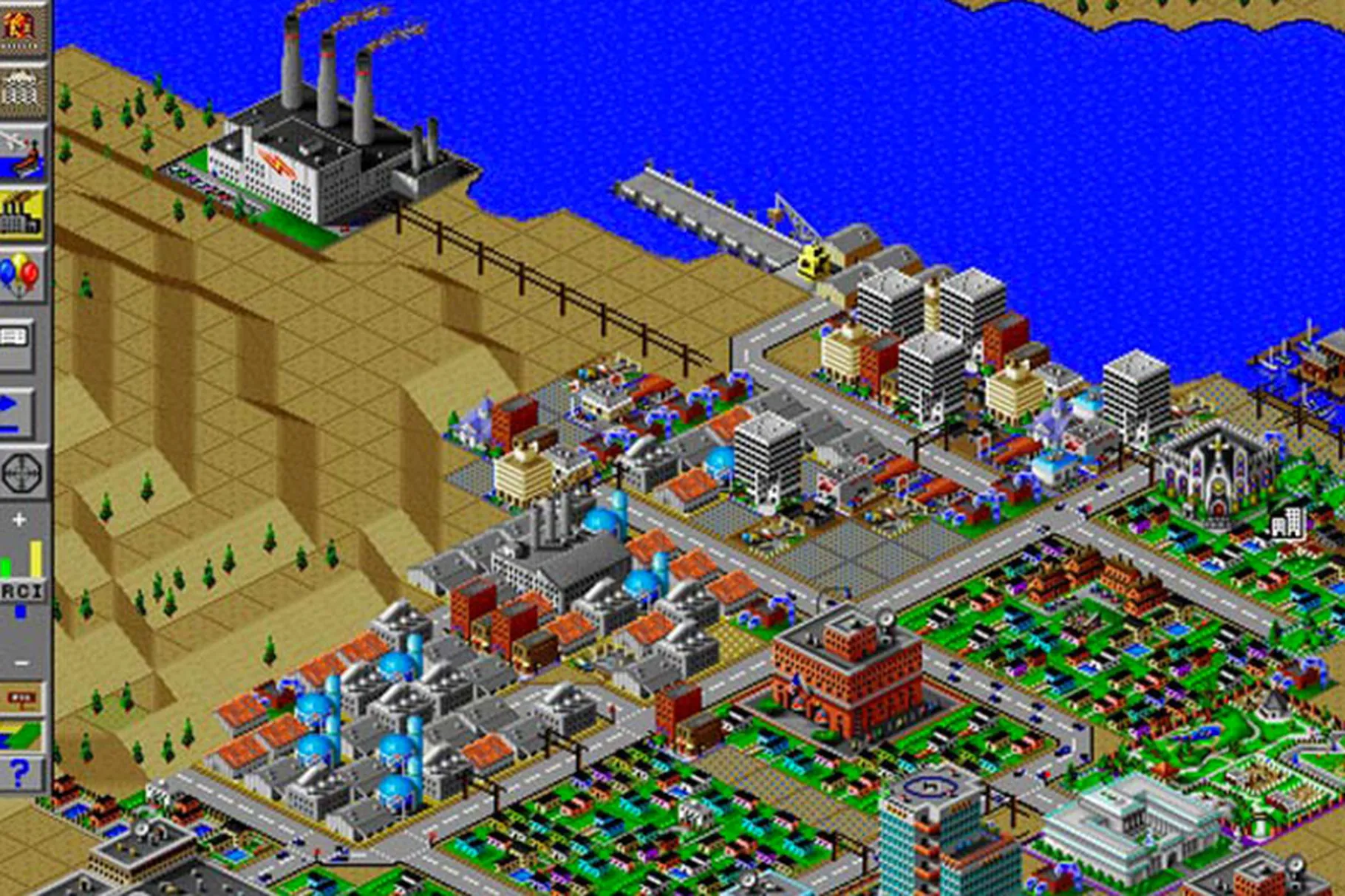 Sim City 2000.
Sim City 2000.
I’ll write more about the specifics of building a hyperstructure over time—we’re still learning this as we go at Zora—but here are some quick thoughts that are worth mentioning here:
- Hyperstructures are made to power millions of interfaces, not just one: when creating a mechanism or anything at the protocol level, ensure it’s as generic as possible.
- Use fees as a way to expand the ecosystem, not extract from it: while it may be possible to extract value in the short term, this might be a local optima that misses the broader opportunities that come from a diverse platform ecosystem on top of your protocol.
- Take a protocol-first building approach: focus on developer adoption, to create as many integrations as possible—an important network effect and cementing the Hyperstructure as the default.
- Building liquidity: onchain liquidity makes it beneficial for other entrants to join the ecosystem, and benefits everyone else. This is a key network effect and also reduces the ability/incentive to fork.
- Ownership where possible, governance where only necessary: create ownership and governance where only absolutely necessary. Too much of either and you may find that the Hyperstructure gets skewed incentives, or at risk of attack.
- There is a long build cycle: deploying protocols in this manner is much more akin to creating hardware than software. There are long design periods, high friction migrations and a high bar for deployment.
Societal Infrastructure
 The Eden Project: The largest greenhouse in the world is home to over one million types of plants.
The Eden Project: The largest greenhouse in the world is home to over one million types of plants.
Given their immutable and permanent nature, we have the opportunity to create civilizational infrastructure that can outlast our own lifetimes—all of which is native to the internet.
We’ve never had the tools to create software-based infrastructure that can work as-designed for generations without degradation or falling to the tragedy of the commons to sustain itself. And we’re at a once in a generation moment where we are the ones lucky enough to have the privilege to build the first.
For every financial utility I’d posit we’ll likely see a singular hyperstructure emerge: exchanges, marketplaces, lending pools, options and so on. The same could be said for non-financial utilities that are currently run and operated by web2 and social media platforms like domain names, registries, identity, curation, tags, reputation, emojis, read receipts and so on. The entire internet is being rebuilt in the form of Web3, with crypto and the blockchain at its core—we have the opportunity to restructure the utilies of the internet of the past 40 years outside of private control, and create entirely new ones that simply weren't possible before.
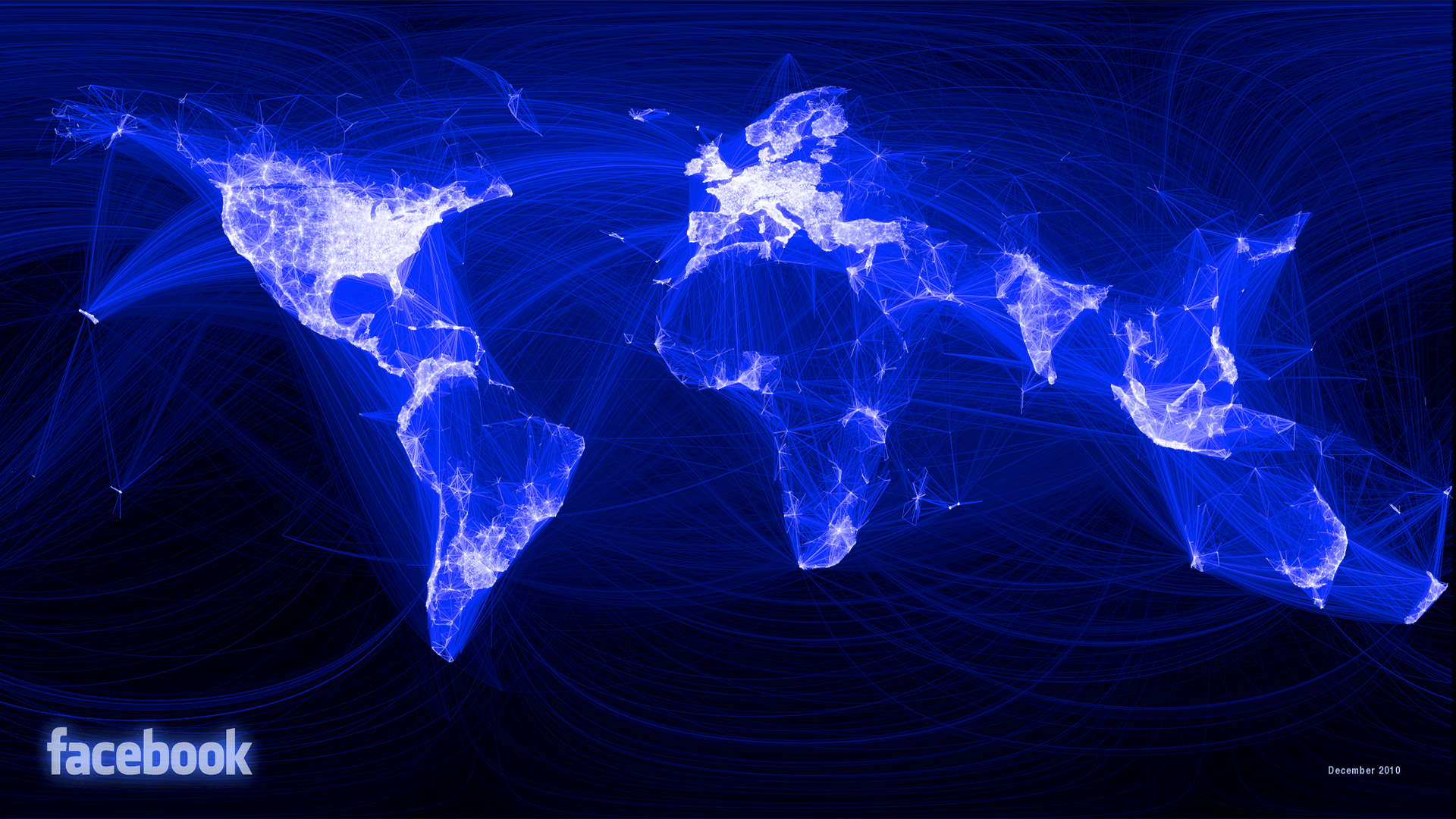 The Facebook Social Graph in 2010, featuring 500 Million people—the one of the largest actors of the platform era.
The Facebook Social Graph in 2010, featuring 500 Million people—the one of the largest actors of the platform era.
The scale, importance and ambition of these pieces of infrastructure will eventually be marveled at in the same way we do museums, power grids, canals, dams and ancient roads. Hyperstructures will be at a scale we've never witnessed before, and can be more substantial than even the current social media platorms of today. They will also be judged on their availability and utility to the public over a long time horizon. A long term view is critical when designing a Hyperstructure, something that's often typically lacking in the short term profit-minded world of Web3.
Crucially, because of their immutable and permanent nature, we must optimistically create them in their purest, most free and most beautiful forms. These Hyperstructures could very well be used by our grandchildren, so we have the responsibility to build them with them in our minds—and we should do them proud.

It is now possible to create Hyperstructures that run for free, forever—so we should use that logical extreme as our starting point, not something we should avoid or ignore. With new paradigms comes new value systems, and with Hyperstructures we have the opportunity to create public goods that can remain free forever, whilst rewarding the builders and participants for creating and contributing to these invaluable systems that serve society at large for many years to come—that sounds like something that's worth building towards and finding out.
 We're entering the unknown, let's embrace it and discover what's possible.
We're entering the unknown, let's embrace it and discover what's possible.
References
- Positive Sum Worlds: Remaking Public Goods by Toby Shorin, Sam Hart, Laura Lotti
- Credible Neutrality by Vitalik Buterin
- The Network State by Balaji Srinivasan
- Website clock: Canary Yellow by Virgil Abloh
- Site structure & CSS: Other Internet
- Manhattan Island by Herbie Hancock
- history of the entire world, i guess by Bill Wurz
- IQ Bell Curve / Midwit
- Thanks to Tyson, Dee, Shayne, Mat, Riva and Pete for their contributions to this essay.
- 🌜🌞🌛
We’re building a Hyperstructure in the form of Zora—the marketplace protocol for the internet. We’re hiring at Zora Labs and looking for contributors to the Zora DAO, hit me up on twitter if you're interested.
⌐◨-◨ 2022 jacob ❍ — essay to be minted